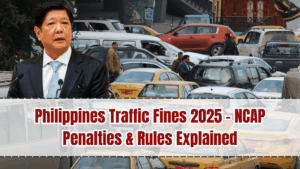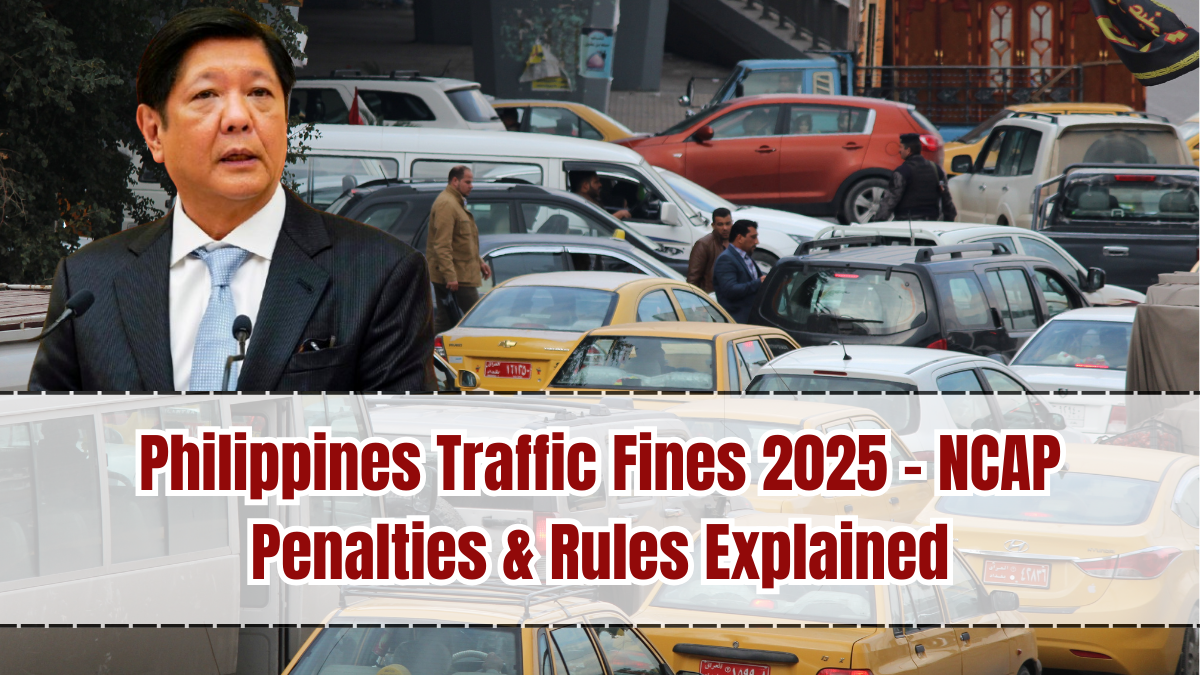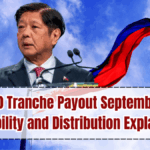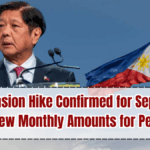The No Contact Apprehension Program (NCAP) continues to expand in the Philippines, and in 2025, new fines and stricter enforcement measures have been announced. The Philippines Traffic Fines 2025 update introduces higher penalties for common violations and wider use of digital enforcement cameras across Metro Manila and other cities.
For motorists, this means adapting to stricter compliance with road rules, as violations will be detected electronically and penalties issued directly to registered vehicle owners—without the need for on-the-spot apprehension by traffic enforcers.

What is NCAP?
The No Contact Apprehension Program is a traffic enforcement system that uses CCTV, traffic cameras, and AI-based monitoring systems to detect and record violations. Instead of being stopped on the road, offenders receive violation notices by mail, email, or SMS linked to their vehicle registration.
The program aims to:
-
Reduce corruption and bribery by minimizing face-to-face interactions.
-
Ensure stricter compliance with traffic rules.
-
Use technology to handle violations in high-traffic areas.
-
Improve overall road safety for motorists, pedestrians, and cyclists.
Why NCAP Fines Were Updated in 2025
The Philippines Traffic Fines 2025 include new penalties under NCAP because of:
-
High Violation Rates: Persistent disregard for traffic rules like beating red lights and illegal parking.
-
Road Safety Concerns: Increase in accidents linked to reckless driving.
-
Public Complaints: Calls for fairer enforcement after reports of inconsistent fines.
-
Digital Expansion: NCAP systems expanded beyond Metro Manila into other urban centers.
-
Standardization: To unify penalties across different cities and prevent confusion.
Updated NCAP Fines – 2025 Penalty List
The updated penalties for 2025 include:
-
Beating the Red Light – ₱3,000
-
Illegal Parking (CBD/No Parking Zones) – ₱1,500
-
Reckless Driving – ₱5,000 + possible license suspension for repeat offenders
-
Overspeeding – ₱2,000 to ₱4,000 depending on severity
-
Number Coding Violations – ₱1,000
-
Failure to Wear Seatbelt – ₱1,000 per passenger
-
Motorcycle Helmet Violations – ₱1,500
-
Blocking Pedestrian Crossings/Intersections – ₱1,500
-
Driving Without Plate or with Tampered Plates – ₱5,000 + confiscation orders
-
Disregarding Traffic Signs – ₱2,000
Repeat offenders may face double penalties and risk having their vehicles impounded.
How NCAP Enforcement Works in 2025
The process under NCAP has been further streamlined:
-
Violation Detection
-
Cameras capture images/videos of violations.
-
Automated systems identify the vehicle’s plate number.
-
-
Notification
-
Vehicle owners receive a violation notice via email, SMS, and registered address.
-
Notice includes violation details, images, and penalty amount.
-
-
Payment
-
Payments can be made online through official portals or at accredited banks and payment centers.
-
-
Disputes & Appeals
-
Motorists can file appeals within 10 working days.
-
Cases will be reviewed by traffic adjudication boards.
-
Impact on Motorists
The Philippines Traffic Fines 2025 have a direct impact:
-
Stricter Compliance: Drivers must obey rules consistently as violations are electronically monitored.
-
Financial Burden: Higher fines may strain frequent violators.
-
Reduced Bribery: No face-to-face apprehension reduces corruption opportunities.
-
Vehicle Owners Responsible: Even if someone else drives the car, the registered owner receives the fine.
Benefits of NCAP Expansion
The revised NCAP system brings several advantages:
-
Safer Roads: Reduction in reckless behaviors like overspeeding and red-light running.
-
Fairer Enforcement: Automated cameras ensure equal treatment for all motorists.
-
Traffic Flow Efficiency: Less on-road confrontation between enforcers and drivers.
-
Digital Integration: Payments and appeals can now be handled entirely online.
Public Concerns About NCAP 2025
Despite its benefits, NCAP remains controversial:
-
Awareness Issues: Some motorists claim they are unaware of violations until receiving fines.
-
Financial Impact: High penalties hit low-income drivers hardest.
-
Appeal Delays: Adjudication boards may face backlogs.
-
Privacy Concerns: Widespread use of surveillance cameras raises questions about data protection.
The government has promised greater transparency, public education campaigns, and stronger appeal mechanisms to address these concerns.
Tips for Motorists to Avoid NCAP Fines
To stay compliant with the Philippines Traffic Fines 2025:
-
Always follow speed limits and traffic signals.
-
Avoid illegal parking, especially in CBD and school areas.
-
Ensure seatbelts and helmets are used at all times.
-
Keep license plates visible and untampered.
-
Stay updated with official NCAP advisories to avoid confusion.
Conclusion
The Philippines Traffic Fines 2025 under the No Contact Apprehension Program introduce stricter penalties, wider camera coverage, and stronger enforcement mechanisms. While the higher fines may raise concerns about affordability and fairness, the program is expected to significantly improve road safety and traffic discipline across Metro Manila and beyond.
Motorists must adapt by practicing responsible driving, keeping their vehicles compliant, and staying updated on NCAP rules to avoid hefty penalties.
FAQs
What is NCAP in the Philippines?
The No Contact Apprehension Program uses cameras and automated systems to detect and fine traffic violations.
What are the new fines in 2025?
Penalties include ₱3,000 for red-light beating, ₱1,500 for illegal parking, and ₱5,000 for reckless driving.
Who receives the NCAP fine?
The fine is issued to the registered vehicle owner, regardless of who was driving.
Can I dispute an NCAP violation?
Yes, appeals can be filed within 10 working days to the traffic adjudication board.
How are NCAP fines paid?
Payments can be made via official online portals, accredited banks, or payment centers.
Click here to know more.




